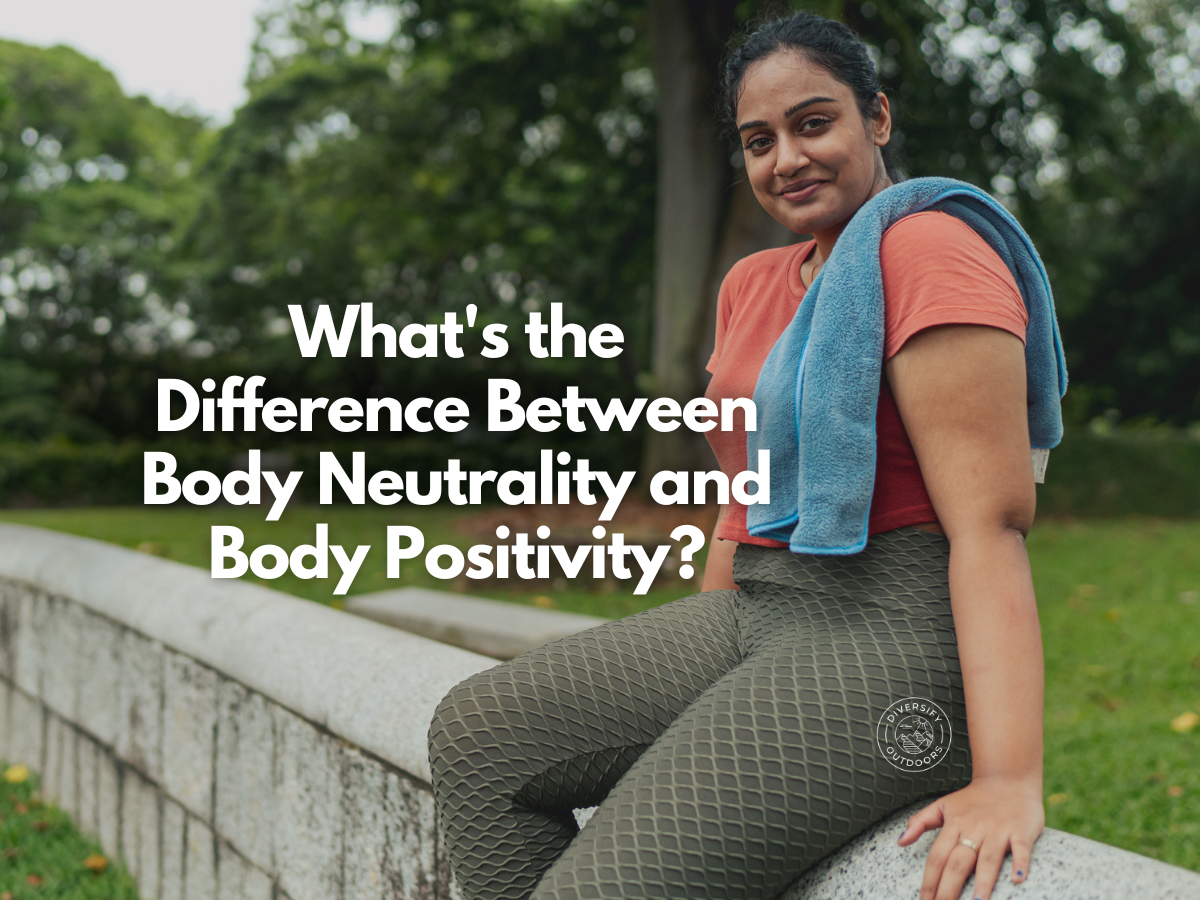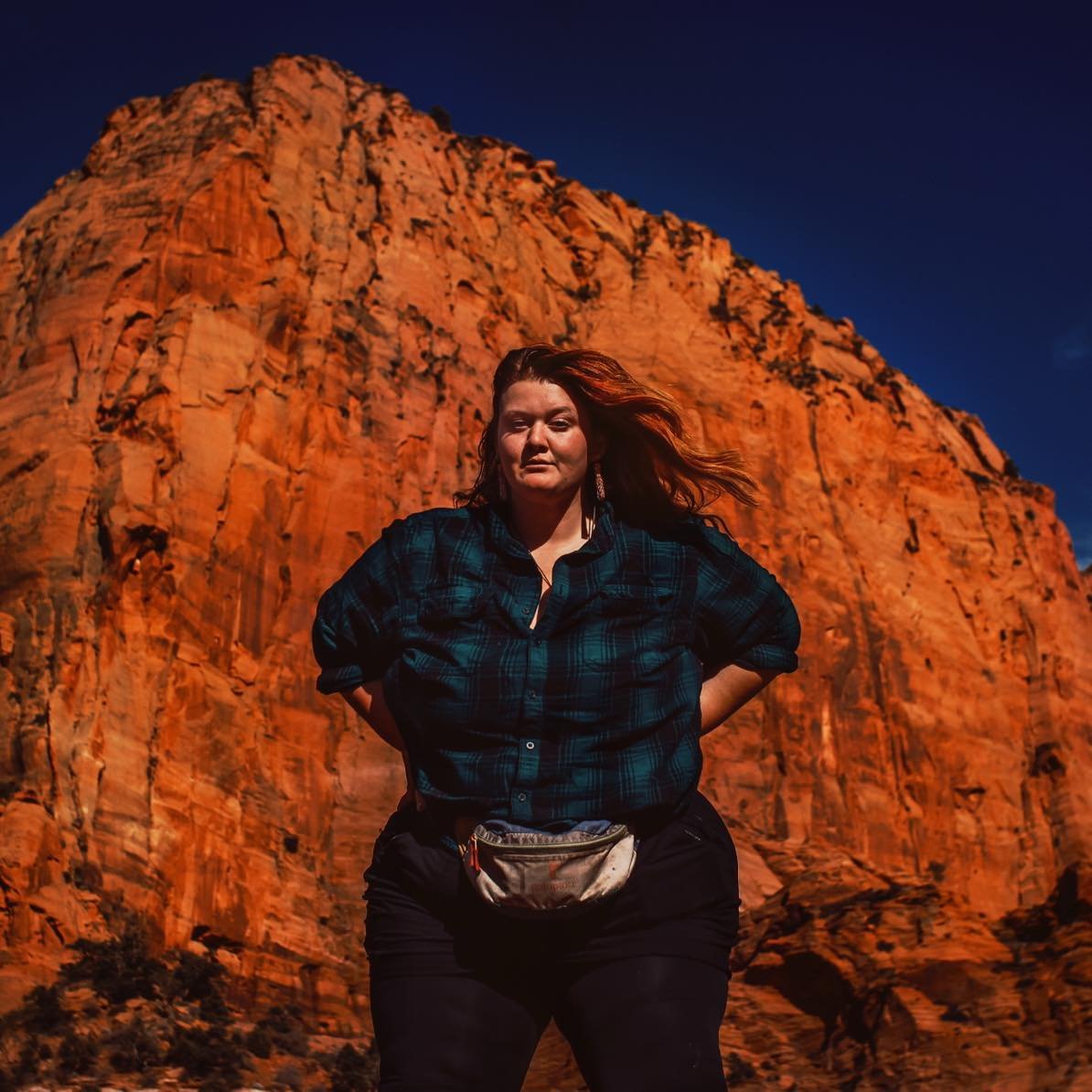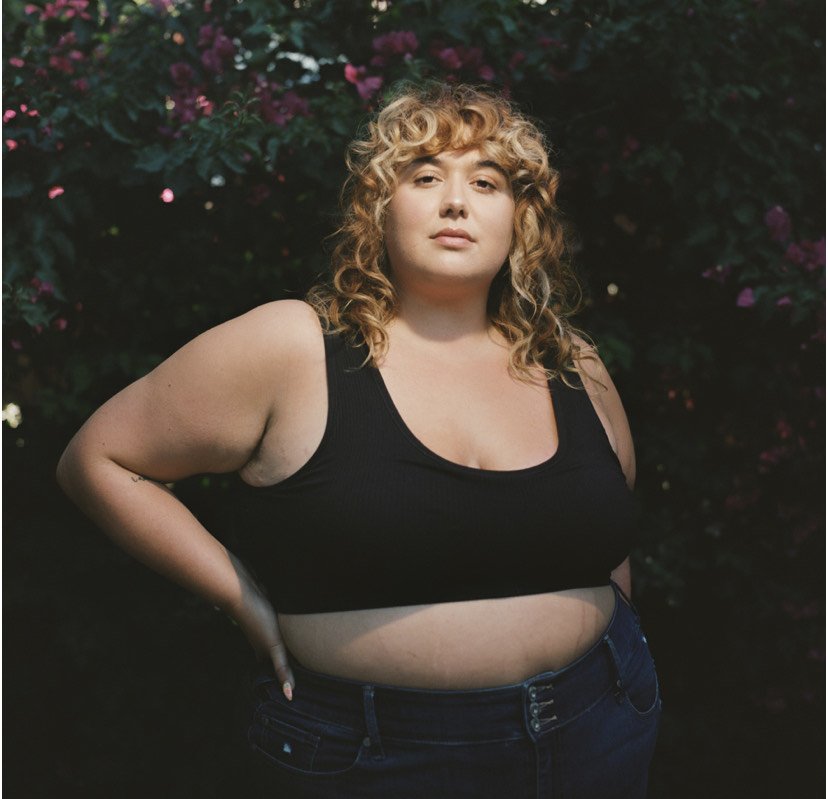What’s the Difference Between Body Neutrality and Body Positivity?
Photo credit: canva.com. Graphic Artist: Sarai Pak
Humans are as diverse as the natural world around us. Each of us is unique to this planet, with different skin tones, body shapes, abilities, and identities. So why is it that we tend to separate or criticize people based on weight or appearance? With social media and advertisements only featuring certain body images, it sends the message that some body shapes are better than others. Even in the outdoor industry, there is a lack of inclusion of diverse body types from commercial ads, to activewear, and gear sizing. Luckily, the message is beginning to shift from one of exclusion to one of acceptance. But as we continue to strive for body inclusion, we still have to consider how we address topics of body image and body diversity.
It's unfortunate that, as a society, we tend to label certain body types as negative or unworthy of recognition, sorting different bodies, abilities, and skin tones into “this or that” qualities. Fat people only hike for weight loss while BIPOC (Black, Indigenous, People of Color) and disabled folks don’t enjoy nature at all, are examples of the types of negative conversations that set the tone for how most people are treated, especially in the outdoor industry. Even beyond the outdoor industry, we are constantly shown what body types are deemed more socially desirable through media and advertising. Whether we intend for them to or not, these undeveloped ideas can have harmful effects.
Fortunately, things are changing with more companies and communities coming together to create a space of inclusion for all human bodies. We are beginning to hear more stories of acceptance and encouragement as more BIPOC, LGBTQIA, fat, transgender, and disabled peoples are represented and even celebrated. All of these steps forward promote the idea of body inclusion and allow all people to feel more accepted and represented. Plus size hiker, guide, boater, and outdoor advocate, Ash, points out…
“You can’t have body inclusion without actually including all types of body representation.”
Photo credit: Tommy Corey. Photo of Ash.
As we continue to talk about what body inclusion really means, we also have to watch how we address certain issues of body diversity. Ash suggests that, “[i]nclusivity with bodies also means that we are accepting and creative with solutions to truly create an inclusive experience.” How you talk about a person’s experience is important, and we should always seek ways to improve the conversation. The body inclusivity movement is no different in that how you choose to address the issue should take into consideration who you are trying to help and how it affects them.
One of the first movements created to uplift different body types began under the term body positivity. The body positivity movement started in 1960s New York under the term fat acceptance, and was the first to really advocate for more representation of fat body types. Most body types were not being shown in mainstream media and were being discriminated against in many circles of life, especially for BIPOC. Model, lecturer, consultant, and performance artist Angelina Moles confirms that “[Body positivity] was created by and centered on fat people of color who were asking to be seen, cared for, and have society change its views on fat people and create positive representations of fat people taking up space.”
Body shape diversity is often not pictured in advertisements or is placed into less desirable categories and hidden away. And with discrimination within society and even the healthcare system, it’s easy to be discouraged by such an open rejection. It makes it seem like some bodies are more worthy of recognition and respect than others. This flawed way of thinking led to the creation and resurrection of the Body Positivity Movement. Every body is worthy and this shouldn’t be dependent on who society is willing to sponsor.
For Plus Size Backpacking founder Charlotte Buell, the body positivity movement meant stepping into self-love. “Pushing back against negative self-talk surrounding body image is NOT easy. So, the [Body Positivity] movement did help me step into my own power and (did) have some positive overall effects on me.” And for Ash, the Body Positivity Movement is about “…accepting your shape and size but also doing things that serve that body well. I think being body positive includes feeling the best you can and not falling into society’s trap of dangerous diet cultures.”
The movement has since expanded to include all bodies regardless of gender, abilities, shape, size, and skin tone. Body positivity is a way to call attention to the issues behind body exclusion and encourage the idea that all bodies and all abilities are worthy of appreciation. Geared toward loving and accepting yourself, body positivity is a way to let people know that their bodies are beautiful works of art and should be loved and cherished as they are. You should love yourself and love your body despite what society tells you. It encourages us to stay positive about our appearance.
Photo credit: Angelina Moles. Self portrait.
However wonderful the body positivity movement seems, there has been a setback to the thought that you should always love your body. When you tell people they have to love their situation all the time, no matter what, you are forgetting how complex we really are as humans. In reality, everyone is going to have a different relationship with their body and we all navigate the world in different ways. Some days you will feel frustrated and tired. On other days you will be energetic and accepting. Our experiences are diverse and so are the emotions we have regarding our bodies.
Angelina elaborates on the idea that this type of thinking disregards our vast experiences as people. “Framing body positivity as a way to see how much our body can do for us is erasing disabled people from the conversation. Where do we fit in if our bodies don’t always do things for us or if chronic illness has our bodies at war with their own selves?” Yes, people are beautiful and should be celebrated, but it’s not a good idea to require people to be completely happy with their physical form. This type of speech ultimately leaves out people who may have different life experiences.
For some, the body positivity movement meant feeling disconnected from their body, thinking positively but not really listening to what the body wants. For Charlotte, the movement was initially “such a radical and powerful notion that rebelled in the face of anything and everything I had been taught to feel about my bigger body.” However, after taking on the idea of body positivity, she started to lose the connection she had with her body's overall health. “…I am not blaming the [body positivity] movement for this… however, the way I embraced it without critical thought of my own experience was not healthy for me.”
But beyond not considering the way people feel about their bodies, the social media side of the body positivity movement also lacks representation for the very people it set out to support. The body positivity campaign tends to only represent people who carry social attractiveness and shows favor for thin, white, nondisabled bodies. Even after the movement gained popularity, it continued leaving out the fat and larger bodies it was first created to uplift by again only showing certain figures and images. Angelina questions what happened to the fat bodies and especially BIPOC, that originated the movement, and why we are still only seeing socially acceptable people at the forefront of this platform.
The body positivity movement has, intentionally or not, encouraged people to love their body’s appearance, and yet continues to exclude certain bodies from the conversation. That, paired with the idea that we should always accept our body’s situation regardless of our feelings, and we have a dangerous mix of behavior. This is why the discussion of body inclusion is changing to one that takes away the burden of having to always feel good about your body’s appearance. We are starting to take the focus away from appearance and abilities altogether and accept that our bodies simply are what they are.
In reality, we are merely here to be human. As we continue to seek and promote diversity in all acts of life, we learn that the movement towards body inclusion doesn’t require you to be happy about your appearance. It also doesn’t require that you completely love every situation you find your body in. With body neutrality, we can simply experience the fact that we are in a human body that does what it does.
Photo credit: Danielle Desnoyers
The innovator behind the body neutrality movement is Anne Poirier who began the notion to help those recovering from their body image. She soothes her clients by reminding them that their body is just something that exists and that its purpose or appearance doesn’t have to matter. Often associated with a lack of prejudice, body neutrality is creating a space where you don’t have to have any strong opinions about your body. It is essentially seeking to stop the need to promote certain body types at all.
“Body neutrality allows us to see ourselves as worthy regardless of feelings towards our bodies. It is a movement that creates nuance around feelings of the body”
“[Body neutrality] is a movement that asks us to acknowledge our body as an entity that is neither wrong nor right, but is existing”, explains Angelina. Each human body is so vastly different with just as many different abilities and needs. Body neutrality reminds us that the way we treat people and the way we treat ourselves should never be based on how we feel or what we look like. Everyone deserves respect because they simply exist.
Charlotte Buell relates the idea of body neutrality to the ebbs and flows of backpacking. “The first major incline sometimes will have me feeling frustrated at the size of my body. However, an hour later after warming up I may feel super strong and empowered being a plus size woman backpacking.” By the end of the night, she is neutral but grateful.
“Body neutrality tells me to embrace all those feelings.” At every point of that journey, the body is worthy of respect.”
For Ash, body neutrality is about a hands-off approach to telling people what their standards should be. “It’s neutral, not listening to what people say I should and shouldn’t do with my body. This means I mind my business and don’t tell others what they should do with theirs. That’s the beauty of neutrality, you accept what others desire to do with their lives.”
The neutrality behind this movement isn’t to say that humans and human bodies are not unique or something to be seen as beautiful, but it does take the pressure off having to always feel accepting of your body’s appearance and abilities. It’s not our job as people to constantly worry about being recognized or respected, but it is our responsibility, as a society, to let people feel seen and understood. Body neutrality accepts that people have diverse emotions about their bodies. It is an acceptance of the rollercoaster ride that is being human. You don’t always have to feel uplifted by your body and, in fact, you don’t have to consider your appearance at all.
Photo credit courtesy of Ash.
When certain bodies are not recognized, it can set the tone that they are not desirable or socially attractive, but the body neutrality movement acknowledges that your body’s appearance or weight really shouldn’t matter in the grand design of diversity. What matters more is that people are accepted and respected regardless of body size, skin tone, abilities, or gender. It’s not about featuring people because they are “socially” attractive; it’s about not putting standards on people altogether. Representation should be a reflection of the fat, disabled, BIPOC, transgender, and culturally diverse populations that we see in real life every day.
So again, we should start to accept the human experience as is and stop trying to force positivity or exclude certain body types. Body neutrality allows us to experience the emotions behind having a body while also shifting importance away from social attractiveness. It allows us to separate from the idea of appearance, and allows us to create a more body inclusive space for everyone. And while the intentions behind body positivity are uplifting and inspiring, body neutrality offers a chance to accept the ups and downs of being a person.
But even with body neutrality’s inclusive intentions, the truth is that one word or phrase doesn’t fit all. Not all movements are the same and what works for one, won’t necessarily work for another. Even within this discussion, there are different viewpoints to consider.
When asked about their preference for the use of body positivity versus body neutrality, Angelina admits, “I prefer Fat Liberation over the two other terms because at the heart of these movements, I do believe it should be about liberating fat people… Everyone with a body should be fighting for fat liberation.” Charlotte adds “I prefer body neutrality or body acceptance. This is more realistic for me.” And as Ash points out, even reclaiming a word is a movement in itself. “I use fat as a personal description… It helps take away the power from the word as an insult people love to throw around.”
Humans are diverse and our needs, feelings, and experiences are diverse too. How we represent each other is important to body inclusion. While the intentions behind any movement are often good, how we address these topics is essential. Angelina begins to sum it up with, “if your body positivity or body neutrality come with weight limits or health requirements then it isn’t actually body positivity or body neutrality.” As we continue to grow into a more inclusive space for all bodies and beings, we must continue to consider who is actually included in those spaces.








